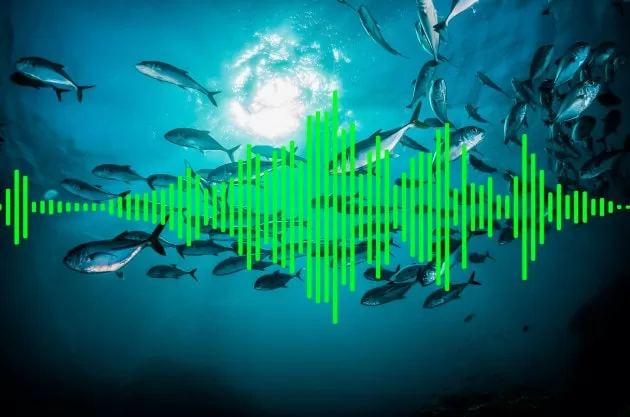Forget what you thought you knew about fish being silent creatures. It turns out, they have a whole world of communication happening beneath the surface. From grunts and pops to whistles and hums, fish use a variety of sounds to communicate with each other and their environment. And by listening in, we can gain valuable insights into their behavior and the diversity of species present in our oceans.
For a long time, it was believed that fish were mute, with no ability to produce or perceive sounds. But as technology and research have advanced, we have discovered that this is far from the truth. In fact, fish are quite vocal, and their sounds serve a variety of purposes.
One of the main reasons fish communicate through sound is to attract mates. Just like birds singing to find a partner, male fish use sounds to court females. For example, the male toadfish produces a loud humming sound to attract females to his nest. And the louder the hum, the more attractive he is to potential mates. Similarly, male midshipman fish use a series of grunts and growls to serenade females during breeding season.
But it’s not just about love. Fish also use sound to establish dominance and defend their territory. The sounds they produce can range from aggressive growls to softer, more submissive grunts. This helps them maintain their social hierarchy and avoid conflicts with other fish.
Communication through sound also plays a crucial role in schooling behavior. By producing specific sounds, fish can coordinate their movements and stay together as a group. This is especially important for species that migrate long distances, as it helps them stay on course and avoid predators.
But perhaps the most fascinating aspect of fish communication is their ability to use sound to navigate and locate food. Many fish have specialized organs called “weberian ossicles” that connect their swim bladder to their inner ear. This allows them to detect vibrations and low-frequency sounds, helping them navigate in murky waters and locate prey. Some species, like the blind cavefish, have even evolved to rely solely on sound for navigation and communication, as they have no eyesight.
So, how do we listen in on these underwater conversations? Scientists use a variety of techniques, including hydrophones (underwater microphones) and acoustic tags. These tags are attached to fish and primato their sounds, allowing researchers to track their movements and behavior. By analyzing the sounds, scientists can identify different species and even determine their age and sex.
But it’s not just scientists who can benefit from listening to fish. Fishermen can also use this knowledge to their advantage. By understanding the sounds fish make, they can better predict where and when to find certain species, increasing their chances of a successful catch.
Moreover, listening to fish can also help us monitor the health of our oceans. Changes in the underwater soundscape can indicate shifts in the ecosystem, such as the presence of new species or the decline of others. By regularly monitoring these sounds, we can track the health of our oceans and take necessary conservation measures.
In addition to being informative, listening to fish can also be a truly mesmerizing experience. The sounds they produce are diverse and often surprisingly musical. From the haunting songs of humpback whales to the rhythmic clicks of dolphins, the underwater world is full of beautiful and unique sounds waiting to be discovered.
In conclusion, it’s clear that fish are far from being mute creatures. Their ability to communicate through sound is a fascinating aspect of their behavior, and by listening in, we can learn so much about them. From understanding their social dynamics to monitoring the health of our oceans, the power of fish communication is truly remarkable. So next time you’re near the ocean, take a moment to listen carefully, and you might just be surprised by what you hear.

